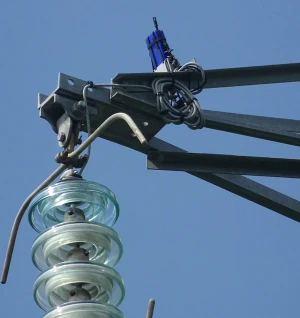Count the Customers:

The transmission and distribution system links power generators and electricity consumers, but it is an often neglected part of any discussion about the future of electricity. Yet paying for this key piece of infrastructure is a giant influence on how the electric grid can or should change as such new technologies as renewable generation go mainstream.
As part of The Full Cost of Electricity (FCe-) project at the University of Texas at Austin Energy Institute, my colleagues and I wanted to ensure that public and policy conversations started with real numbers. So we asked a simple question: “How much are we paying for transmission and distribution, and how does this quantity compare to the past?” Then we dug into the data submitted by investor-owned utilities to find the answers.
Turns out, the number of customers in a utility’s territory is the best predictor of annual transmission, distribution, and administrative (TD&A) costs.
Utilities recover their TD&A costs by a combination of charges for each kilowatt-hour of energy sold, charges for peak power demand, and a fixed connection charge. Since 1960, each customer in the utilities we studied has typically paid US $700 to $800 annually toward TD&A.
Administrative costs are not trivial. Transmission—high voltage and long-distance transport of electricity—accounts for less than 20 percent of the total TD&A cost. Distribution and administration costs are each approximately 40 percent of total, but administration is a bit larger and is the telltale factor: Administrative costs are associated with number of customer accounts, and customer services are related to the number of customers.
Further evidence comes from the fact that utilities have pushed more energy through per customer without it increasing TD&A costs. As a function of the amount of energy delivered, costs decreased significantly from 1960 to 2000, while the average energy consumption per customer nearly doubled from 11,700 kilowatt-hours per customeryear in 1960 to 24,400 kilowatt-hours per customer-year in 1980 and then flattened through 2014. Thus our result: It’s not how much energy is delivered, it’s how many customers the energy goes to.
Our project analyzed the cost of electricity transmission, electricity distribution, and utility administration in the United States. We analyze data reported to the Federal Energy Regulatory Commission (FERC) by investor-owned electric utilities from 1994–2014 using linear regression to understand how the number of customers in a utility’s territory, annual peak demand, and annual energy sales affect annual spending related to transmission, distribution, and administration (TD&A).









